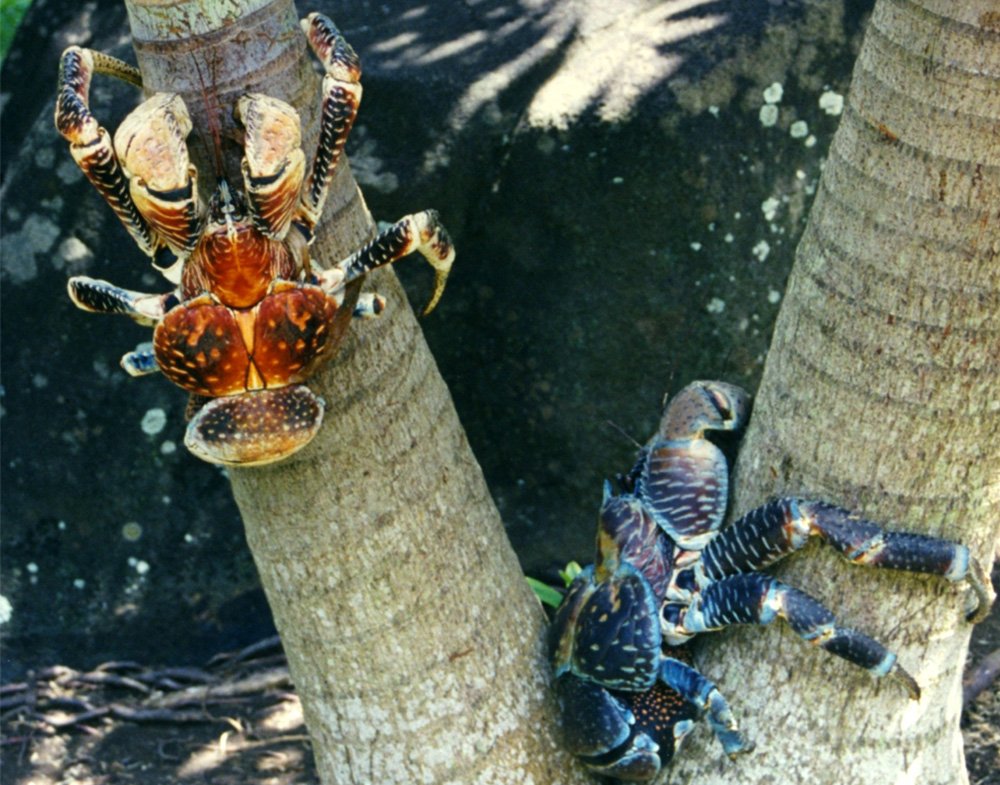Australia’s curious crabs

CRABS DO A lot more than scuttle by the sea – Australia shows that with the crabs in our deserts and rainforests, and crabs climbing trees. In fact one of our most powerful animals, ecologically, is a rainforest crab.
The inland crab (Austrothelphusa transversa) can hunker down in its burrow in the outback for up to six years waiting for drought-breaking rains. Australia has millions of these crabs around inland streams and dams but, except after heavy rains, they are seldom seen.
Other freshwater crabs lurk in streams in northern Australia, as far south as Brisbane. There is also a tiny stream-dweller (Amarinus lacustris) in south-eastern Australia, recorded in the past in Melbourne’s Yarra River. None of these crabs attract much attention because they are small, aquatic and often hide by day. The species known from Melbourne has a body only 1cm wide.
The forest-dwelling robber crab (Birgus latro) stands in stark contrast, as the world’s largest land animal without a backbone. It weighs up to 4kg and is thought to live several decades. While found on many Indo-Pacific islands, it has suffered so much from overharvesting for food that Australia has by far the largest population, on Christmas Island. Driving there one wet night I had to stop every 30 metres to herd these lumbering crustaceans out of my way. Occasionally they climb trees to reach fruits. They can chisel into coconuts to feast on the flesh, though this takes them several days. They drown if kept in water.

The robber crab is the world’s largest land invertebrate. (Image: Inger Vandyke/Copyright Christmas Island Tourism Association)

And they can climb trees. (Image: Brocken Inaglory/Wikimedia)
Christmas Island is pockmarked with burrows because the rainforest is dominated by crabs. The main herbivores are the island’s famous red crabs (Gecarcoidea natalis), which reach densities well above one per square metre of ground. They browse fallen leaves and seedlings, and in places where invasive yellow crazy ants have killed millions of them, the rainforest thickens up as more seeds become trees, showing how strongly invertebrates can structure rainforest. Crabs rule because the island has few mammals.
Australia also has marine crabs that never go near the shore, including the 14kg giant crab (Pseudocarcinus gigas), one of the world’s largest, found more than a hundred metres under the sea.
Stereotypes help us make sense of the world, provided they are not misleading. The world has 1300 species of freshwater crab and others that creep around inside tropical rainforests, but most of us encounter crabs only when we go to the beach, and from that we have constructed a picture of them that is so limiting it should be dropped.
Tim Low is the author of the award-winning book Where Song Began. Follow him on Twitter @TimLow5.




